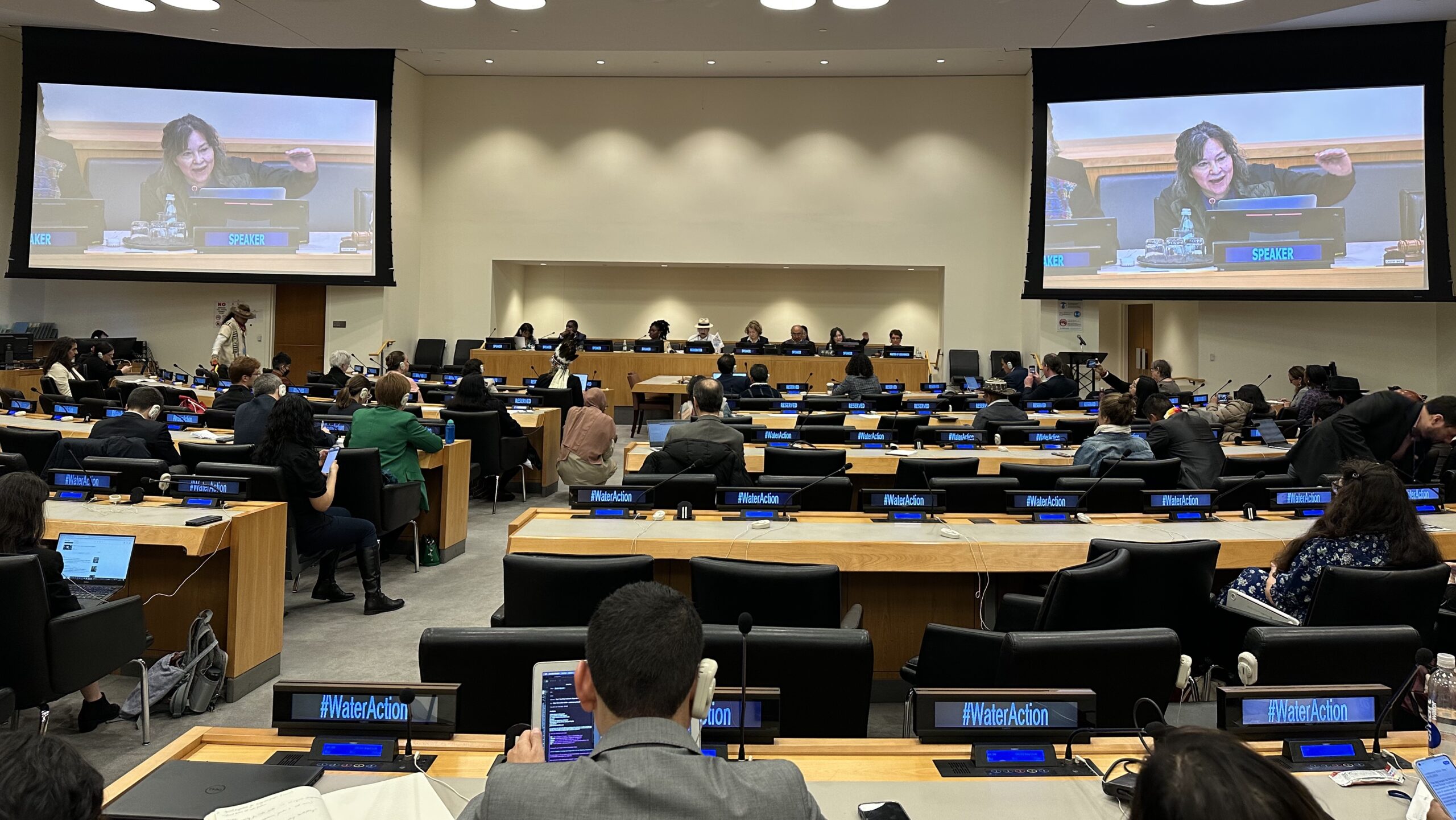Monti Aguirre, International Rivers’ Latin America Program Director spoke at the Informal Special Event – Reducing inequalities – implementing Human Rights about the harmful impacts dams have on human rights especially the rights of Indigenous Peoples.
Watch here on International Rivers’ YouTube channel
Read her full statement:
“I am grateful to the organizers of this panel and pleased to be here with you. I will speak briefly today about rivers, dams and human rights.
Free-flowing and healthy rivers play a critical role in ensuring food security – productive fisheries and their seasonal floods fertilize riverbanks. They are among the most biodiversity-rich ecosystems in the world;
But the impacts of dams have a very direct social footprint. Worldwide, more than 80 million people have been displaced by dams to give way for reservoirs. These reservoirs often flood miles of productive lands along riverbanks where populations have settled because of the rich soils. Study after study has shown that those displaced by dams have been left worse off.
Indigenous Peoples, who hold a deep and special relationship to their lands, rivers and nature overall, have been disproportionately affected. Indigenous people make up 5% of the world’s population, yet they protect about 80% of global biodiversity. Women have also been disproportionately impacted because when there are some benefits they are mostly allocated to men. Downstream communities have also been heavily impacted by displacement with lack of food and water security.
Dams endanger the right to clean water for millions of people.
Specific Instruments to protect indigenous Peoples’ rights such as ILO 169 but this instrument does not allow people to veto development projects because it’s about consultation, not about consent.
In terms of the Declaration of the Rights of Indigenous Peoples, Article 32 requires consultation to be carried out with indigenous peoples before states can undertake projects that will affect their rights to land, territory, and resources.
Article 10 requires also informed consent before the relocation of indigenous peoples from their land and it’s legally binding on all states that ratify them. But the problem is some states have not ratified them and also some national legislation has to be adjusted. That’s a problem right there and that is something we have to work on a lot more.
The UN Working Group on Business and Human Rights notes that indigenous peoples “should determine autonomously how to define and establish consent.” In fact, Consultation Protocols by Indigenous peoples have started. They initiated in 2000 with First Nations in Canada and a lot is going on in the Amazon in Brazil.
Any meaningful progress on protecting water, global biodiversity and saving the climate requires that we stand with indigenous communities to protect their land, water, and rights.
Right now we also have to stand for nature and the movement of Rights of Nature is very exciting and transformative and it’s providing a powerful legal tool for restoration and water protection. We must stand for Nature. Thank you.”
The full official event session can be watched here.
Further background information on the negative impacts of dams on human rights and Indigenous Peoples’ rights
Despite the benefits free-flowing rivers provide, over 3000 large dams are under construction or planned globally. Not only are dams an increasingly risky investment in the face of the climate crisis, they also constitute a major threat to human rights.
These issues have been known for decades. The World Commission on Dams laid out in the early 2000s, and more recently UN Special Representative joint statement on large dams highlighted:
One of the most visible impacts of dams is their direct social footprint. Worldwide, upward of 80 million people have been forced to make way for dams and their reservoirs. These reservoirs often flood miles of productive lands along riverbanks where populations have settled because of the rich soil. Study after study has shown that those displaced by dams have been left worse off – this still holds true today.
Indigenous Peoples, because of their attachment to their lands and natural resources, have been disproportionately affected, often in violation of their right to Free, Prior and Informed Consent.
The downstream impacts of dams, while more indirect, can be just as severe. More than 470 million people have had their livelihoods severely affected downstream.
Permanent legal protection of rivers has emerged as a means of preventing destructive projects from proceeding and ensuring that free-flowing rivers can play their vital functions in sustaining communities and economies for future generations. Indigenous Peoples, local communities, civil society, legal experts, and freshwater scientists have made progress in protecting rivers in law. From court cases, and legislation to constitutional amendments and more.
Another increasing trend is dam decommissioning to address the fleet of tens of thousands of aging and obsolete dams globally that choke the world’s rivers and no longer serve a purpose. Efforts to restore the Klamath River provide particular inspiration, where Indigenous communities have catalyzed what will be the largest dam removal in history. The dam removal begins this spring and aims to restore the health of the watershed and bring back the native salmon population that has been central to Indigenous cultures.

